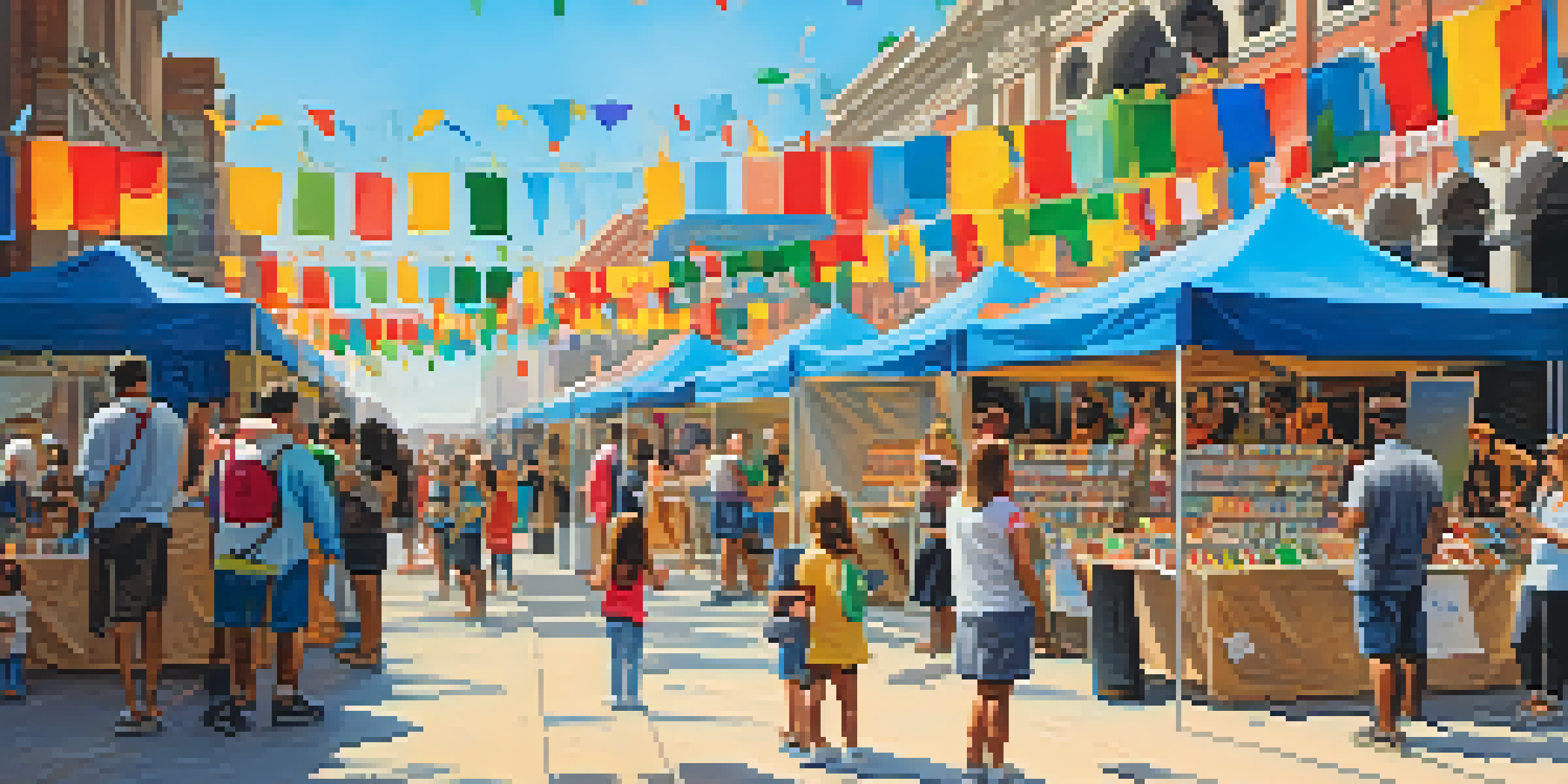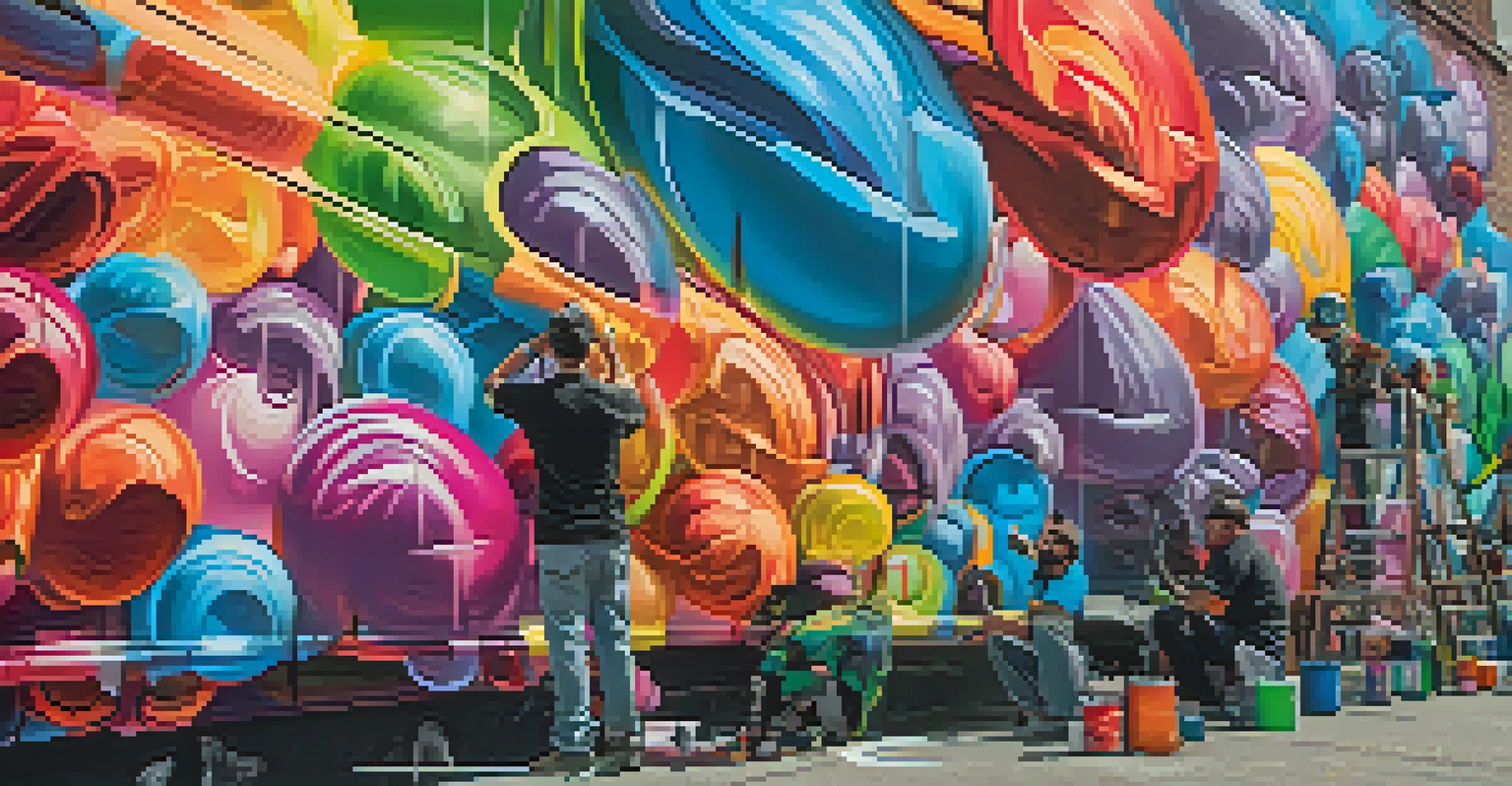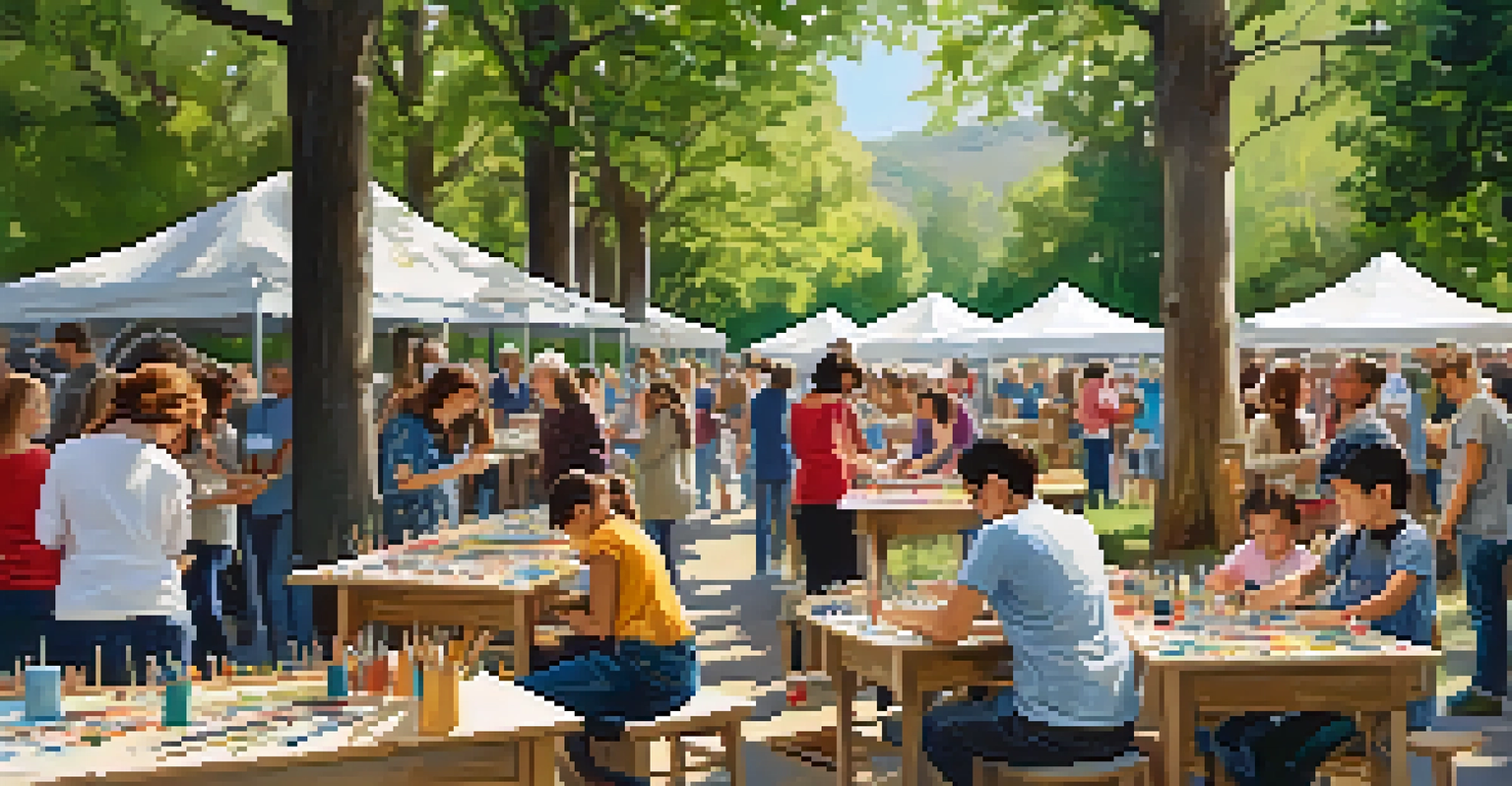Artistic Expressions: Annual Art Festivals in the City

The Importance of Art Festivals in Our Community
Art festivals play a crucial role in bringing communities together, celebrating creativity, and showcasing local talent. They create a vibrant atmosphere where artists, spectators, and families can connect over shared experiences. These events often serve as a platform for emerging artists to display their work, fostering a sense of pride and ownership among locals.
Art enables us to find ourselves and lose ourselves at the same time.
Beyond just art appreciation, festivals can stimulate local economies by attracting visitors who spend money on food, lodging, and other attractions. When people come together to enjoy art, they also contribute to a sense of community and belonging. It's a win-win situation where culture and commerce go hand in hand.
Moreover, art festivals can spark conversations about important social issues, encouraging participants to engage in thoughtful dialogue. By embracing diverse artistic expressions, these events often highlight underrepresented voices, making them essential for cultural growth and understanding.
Spotlight on Major Annual Art Festivals
Each year, cities host a variety of art festivals that showcase unique themes and styles, attracting thousands of visitors. For instance, the City Art Festival is renowned for its eclectic mix of installations, performances, and workshops. It's a place where artists can experiment and visitors can engage with art in new ways, from interactive displays to immersive experiences.

Another notable event is the Street Art Fair, which transforms urban spaces into galleries filled with vibrant murals and live painting sessions. This festival not only beautifies the city but also invites local artists to collaborate and create in real-time, making art accessible to everyone. Attendees can witness the creative process up close, fostering a deeper appreciation for the work involved.
Art Festivals Unite Communities
Art festivals foster connections among artists, spectators, and families, creating a sense of belonging and shared experiences.
Lastly, the International Arts Festival brings together artists from around the globe, offering a rich tapestry of cultures and artistic expressions. This festival is a wonderful opportunity for attendees to explore different styles and techniques, expanding their understanding of art beyond their own cultural context.
Engaging Activities for All Ages
One of the best things about art festivals is the range of activities available for all ages. Families can enjoy hands-on workshops where children can unleash their creativity, painting, crafting, or even sculpting. These activities not only entertain but also educate young minds about the importance of artistic expression.
The arts are the bedrock of our culture, and a vibrant arts community provides a framework for a healthy society.
For adults, there are often panel discussions and artist talks that delve deeper into the themes of the festival, offering insights into the creative process. These sessions can ignite inspiration and provoke thought, making the festival a rich learning experience. Attendees can ask questions and engage with artists, creating a dialogue that enhances their appreciation of the art on display.
Additionally, many festivals feature live performances, including music, dance, and theater, which add another layer of excitement. These performances can transform the festival into a multisensory experience, captivating audiences and drawing them into the world of art in a dynamic way.
Supporting Local Artists and Creators
Art festivals are a vital source of support for local artists, providing them with a platform to showcase their talents and sell their work. Many artists depend on these festivals as a primary avenue for exposure and income, making their participation essential for their livelihoods. By purchasing art directly from creators, festival-goers contribute to the local economy and help sustain the arts community.
Furthermore, festivals often feature competitions and awards, encouraging artists to push their boundaries and innovate. This not only highlights exceptional talent but also motivates artists to continue pursuing their passion. Winners of these competitions gain recognition that can lead to further opportunities, such as gallery showcases or collaborations.
Support for Local Artists
These events provide crucial platforms for local artists to showcase their work and generate income, sustaining the arts community.
In this way, art festivals act as a breeding ground for creativity and collaboration, fostering a supportive network that nurtures local talent. The connections made during these events can lead to future projects, exhibitions, and even lifelong friendships among artists.
The Role of Technology in Modern Festivals
In today’s digital age, technology plays a significant role in enhancing the experience of art festivals. Many events now incorporate virtual reality (VR) and augmented reality (AR) elements, allowing attendees to step into immersive art installations. This tech-savvy approach not only attracts younger audiences but also offers new ways to interact with art.
Social media has also transformed how festivals promote themselves and connect with attendees. Artists and organizers can share updates, behind-the-scenes content, and live performances, making the festival experience accessible to a global audience. This online presence can amplify the reach of local artists, enabling them to gain recognition beyond their immediate community.
Moreover, apps designed for specific festivals provide attendees with interactive maps, schedules, and artist information, enhancing their overall experience. By embracing technology, art festivals can engage a wider audience while creating a more streamlined and enjoyable visit.
The Impact of Art Festivals on Mental Health
Art has long been recognized for its therapeutic benefits, and art festivals amplify this effect by providing a space for creativity and self-expression. Attending these events can lift spirits, inspire joy, and foster connections, all of which contribute to improved mental well-being. Engaging with art, whether through viewing or creating, can serve as a positive outlet for emotions.
Furthermore, the communal aspect of festivals fosters a sense of belonging, which is essential for mental health. Meeting like-minded individuals and sharing experiences can help alleviate feelings of isolation. The vibrant atmosphere of an art festival encourages social interactions, providing opportunities for attendees to make new friends and build supportive networks.
Art Festivals Enhance Well-Being
Participating in art festivals contributes to improved mental health by promoting creativity, social interaction, and a sense of accomplishment.
Finally, participating in creative activities can boost self-esteem and confidence. For many, trying their hand at painting or crafting can lead to a sense of accomplishment, no matter their skill level. These small victories can have a lasting impact on overall mental health, making art festivals not just fun, but also profoundly beneficial.
Looking Ahead: The Future of Art Festivals
As we look to the future, art festivals will continue to evolve, adapting to changing cultural landscapes and audience preferences. Organizers are increasingly focusing on sustainability, ensuring that events are environmentally friendly and inclusive. This commitment to sustainability not only protects our planet but also resonates with attendees who value eco-conscious practices.
Additionally, the integration of diverse art forms and cultural expressions will likely become more prominent. Festivals will strive to represent underrepresented communities, fostering a more inclusive atmosphere where everyone feels welcome. This evolution will enrich the festival experience and reflect the diverse society we live in.

Ultimately, the future of art festivals is bright, with endless possibilities for creativity and connection. By continuing to nurture local talent and engage communities, these events will remain vital to the cultural fabric of our cities, inspiring generations to come.